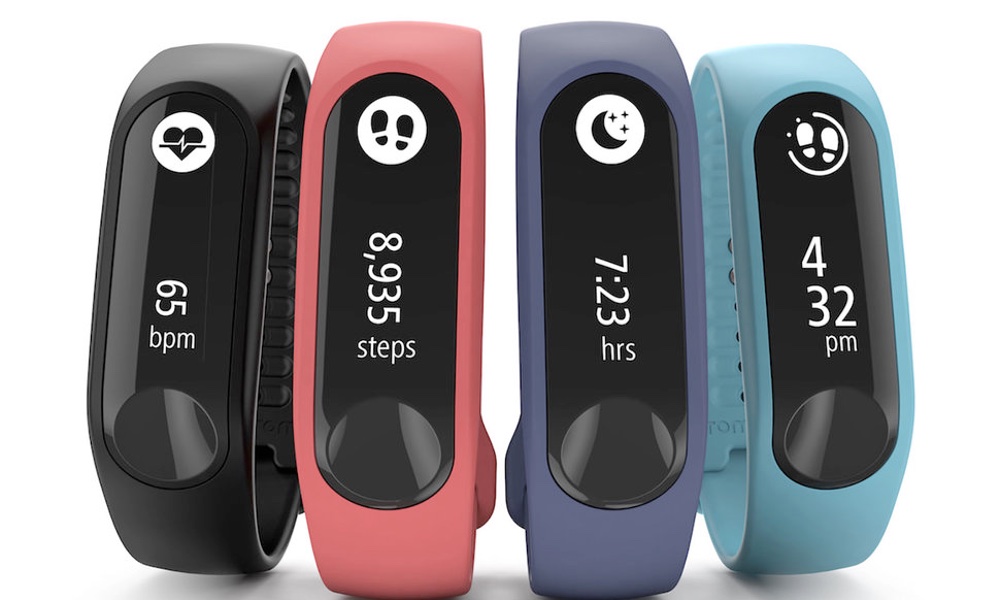Neuroethics is a relatively new area within the larger field of bioethics. It is concerned with the social, legal, and ethical dilemmas that the rapidly-evolving brain sciences can cause. Some of the most significant advances in neuroscience, along with highly sophisticated new brain imaging technologies like functional MRIs (fMRI), expand our understanding of human cognition and emotion.
Fields such as education, business, politics, law, entertainment and national security – all of which require understanding, assessing, predicting, controlling, or improving human behavior – all benefit from what we know about how the brain works. But the ever-expanding applications of neuroscience bring a growing set of ethical dilemmas. Should brain images be used to assess the guilt of criminal defendants? Should wakefulness-promoting drugs be used to enable workers or students to function all day and all night? Is it OK to manipulate the neural systems underlying trust to enhance interrogation of hostile informants?
The growing applications of neuroscience bring a growing set of ethical dilemmas.
To understand the nature and scope of neuroethics, it is necessary to first talk about the most ethically-significant new uses of neuroscience. We’ll begin with examples of how neuroscience is being used in several important fields, and then discuss the ethical issues raised by these applications.
'Chemical castration' is another example of how neuroscience can pose legal and ethical issues.
One recent landmark Supreme Court decision concerning lifetime imprisonment of minors referred to the results of neuroscience research on the differences between adolescent and adult brains. The findings changed the ruling on the defendant’s sentence. Brain imaging studies of murderers have distinguished between impulsive murderers and those who planned their crimes, with the latter being more likely to murder again.
“Chemical castration” is another example of how neuroscience can pose legal and ethical issues. It refers to the practice of prescribing anti-androgen drugs to sex offenders to reduce testosterone levels. This practice of “therapeutic justice” also extends to anger management classes, parenting classes, treatment for drug dependence.
Some have also used fMRI to measure the likely truthfulness of statements, somewhat like a modern day “lie detector,” although these methods still are not admitted as evidence in court. A different type of brain-based lie detection, based on electrical activity (event-related potentials, or ERPs) has been admitted as evidence in the U.S. and in India, where it has already helped convict at least two defendants of murder.
Electroencephalography (EEG) and functional magnetic resonance imaging (fMRI) have become widely-used tools in market research, and in 2002 the term “neuromarketing” was coined to refer to this research. Of course, studies aimed at improving sales in a competitive market are generally not made public.
Compared to other psychological states, the states of 'liking' and 'wanting' have a fairly straightforward relation to patterns of brain activity, which could be very useful to marketing companies.
The websites of neuromarketing companies describe their services in some detail, but do not actually report their findings or recommendations to specific clients. The websites of FKF Applied Research and Neurofocus are good examples.
Given the confidential nature of neuromarketing, its success as a business tool is hard to gauge. Nevertheless, the list of companies paying for neuromarketing services suggests that many big players have faith in it. Forbes magazine reported that this list includes Chevron, Disney, Ebay, Google, Hyundai, Microsoft, Pepsico and Yahoo.
The research that is published in the field of neuromarketing is more focused on academic issues. For example, we’ve learned how packaging design, price, brand identity, spokesperson celebrity and other marketing factors, all separate from the product itself, affect the brain’s responses to the product – and how accurately those neural responses predict purchasing decisions. Some of this information may be inferred by common sense or through more traditional behavioral methods (such as marketing beer to its primary demographic, young men, by associated images of brew, friends, good times and sex) but in some cases brain imaging may provide more sensitive measures of consumer motivations.
It is now a fairly common practice for students to use medications intended for the treatment of Attention Deficit Hyperactivity Disorder (ADHD) as “study aids.” The results of a 2001 survey of over 10,000 American undergraduates showed that 7% had used a prescription stimulant non-medically, and this figure ranged as high as 20% on some campuses.
One brain-enhancing drug on the rise is modafinil, which was initially developed to reduce sleepiness in narcoleptic patients. It also counteracts many of the cognitive symptoms of sleep deprivation in healthy normal users, so it allows for more comfortable and productive 'all-nighters.'
Anecdotal evidence has revealed that many students and professionals have added a range of other drugs, beyond the conventional ADHD medications, to their work routines. A reader’s poll, taken by Nature magazine in 2008, for example, highlighted these practices among professionals as well as students. A substantial minority of readers, especially younger ones, reported using drugs for cognitive enhancement.
One brain-enhancing drug on the rise is modafinil, which was initially developed to reduce sleepiness in narcoleptic patients. It also counteracts many of the cognitive symptoms of sleep deprivation in healthy normal users, so it allows for more comfortable and productive “all-nighters.” Some research suggests that modafinil may also enhance cognition in healthy people who are not sleep-deprived.
The ability to control when one gets sleepy, and perhaps even “work smarter” as well as work longer, has obvious allure. It’s not clear now many healthy people use the drug, although it may be limited by its expense, the need for a prescription and, last but not least, the unknown long-term effects of cheating one’s body of sleep in this way.
In the coming decades of the early 21st Century, there are likely to be a number of new cognitive enhancers available, including drugs to suppress unwanted memories, which are currently being developed. Other technologies like transcranial magnetic stimulation (TMS) and transcranial direct current stimulation (tDCS) are being used alongside pharmaceutical approaches to enhance cognitive processes in abnormal – and normal – brain function.
Not surprisingly, information about security applications of neuroscience is often not accessible to the public. Based on what we know from what is available, it is likely that brain imaging is among the methods being studied or used for military interrogation. Recent research into the brain mechanisms involved in deception, inhibition,, and trust has obvious relevance to the development of methods to weaken a subject’s ability to withhold information, for example by inhibiting the activity of brain regions involved in deception or by enhancing the activity of brain chemicals that promote trust.
'Luke’s binoculars'...uses EEG signals to alert the wearer to his or her own unconscious perception of an important event.
The selection of military personnel is critical for both intelligence and operations, since loyalty and psychological resilience may be challenged under extreme conditions. Despite its many shortcomings, the polygraph (“lie detector”) has a long history of use in security screening. Is it possible that brain imaging methods like fMRI could enhance current methods to provide a greater degree of evidence on truthfulness?
In addition to measuring the psychological traits of personnel and predicting how they may behave in the future, there is also a strong military interest in enhancing personnel in the present. It is well established that war-fighting personnel use a range of medications to increase concentration, decrease fatigue and counteract anxiety. Amphetamine has a long history in the military, joined more recently by modafinil (mentioned earlier) and SSRI use is reported to be common among American troops in Iraq and Afghanistan.
Other enhancements under development by the military are quite different from those shared with the civilian world. One example is the US Defense Advanced Research Projects Agency project known as “Luke’s binoculars.” The device uses EEG signals to alert the wearer to his or her own unconscious perception of an important event. This enhancement is projected to be in use within a few years. Another military application of neuroscience involves of the development of nonlethal weapons that render the enemy temporarily sleepy, confused, in pain or terrified.
The early 21st Century has seen an explosion of new applications of neuroscience. Medications that alter brain function for lifestyle purposes are already commonplace on campuses and in some workplaces. A number of new drugs and nondrug methods for enhancing everything from cognition to libido are on the market or in development. Brain imaging has been commercialized for applications ranging from lie detection to the assessment of romantic compatibility, and all of these methods for monitoring and manipulating the brain have found their way into government uses, from criminal justice to warfare.
Brain imaging and genotyping are similar in that both involve measures that can be taken for one purpose and used for another, either at the moment or later on. However, the brain is a step closer to the behavioral points of interest than genes are, and may therefore be more psychologically revealing. In addition, unlike genes, which can be informative about long-term traits only, brain imaging can deliver information about “real time” psychological states, including political preferences or intentional deception.
Brain imaging has been commercialized for applications ranging from lie detection to the assessment of romantic compatibility, and all of these methods for monitoring and manipulating the brain have found their way into government uses, from criminal justice to warfare.
We suggest that brain imaging will lead to major concerns about privacy. As we discussed with neuromarketing, and brain-based lie-detection, these types of technologies deliver specific types of information – they are not general-purpose “mind readers.” Both technologies require a cooperative subject.. In fact, compliance poses a real obstacle in forensic applications, especially in the national security area, so taking these technologies outside the laboratory in a reliable manner is not so simple.
A final point concerning brain imaging’s threat to privacy is that brain imaging can provide information, but it is up to individuals and society to decide whether and how to use the information thus provided. Questions of whether brain imaging can be used to distinguish between truthful and deceptive statements or whether our brain activity can be used to inform advertising or political campaigns are separate from the questions of whether we should use these methods to vet testimony or influence a person’s choices.
There are serious risks associated with certain prescription stimulants, including heart attack, psychosis and addiction.
Most people find it makes sense to hold enhancements for normal function to a higher safety standard than treatments for dysfunctions or disorders. In terms of risk-benefit ratio, this is because we assume that treatments have greater benefits than enhancements: The value of returning someone to health is greater than the value of making a healthy person even better off.
Still, the issue remains that little is known about the long-term safety of using neurotechnologies or neuropsychiatric medications for enhancement purposes. The safety of enhancements has recently attracted attention in the neuroethics literature, and deservedly so.
There are serious risks associated with certain prescription stimulants, including heart attack, psychosis and addiction. Do these potential risks override the benefit a child or adult might receive from using them? Of course, the issues of how to weigh safety against potential benefits and the methods for assessing safety are essentially the same, whether one is considering cognitive enhancement or cosmetic surgery.
Take, for example, the situation that would occur when one worker in an office uses modafinil to extend his work hours on a regular basis. Imagine the pressure his or her colleague might feel to be as productive.
In competitive situations, from college admissions testing to chess championships, brain enhancements could give a person an unfair advantage. Is it fair to take a drug to enhance a test score if one plans to continue using brain enhancement, since that score would actually reflect the level of ability the individual is likely to bring to his or her studies in the future?
On the other hand, if someone were to use a temporary enhancer to improve a test score and then stop enhancing, this would be undeniably unfair. The score would not reflect their "genuine" ability.
Another way that neurotechnology can lead to unfairness is related to socioeconomic disparities. Brain enhancements have so far been more available to wealthier and better-connected members of society. In a world where basic healthcare, education, and personal safety cannot be guaranteed to everyone, it seems unlikely that brain enhancements will be equitably distributed.
Finally, while brain enhancement can be helpful to users, it can also put non-users at a disadvantage. Take, for example, the situation that would occur when one worker in an office uses modafinil to extend his work hours on a regular basis. Imagine the pressure his or her colleague might feel to be as productive.
On the other hand, many of us find a troubling violation of autonomy (personal free will) in such scenarios. And aside from this, it is not clear what level of dependence may be created. Long-term dependence is especially concerning in the military, when the person may not be in a position to decide for him- or herself whether to accept the particular enhancement or not.
In the same vein, involuntary “enhancement” of criminal offenders, to improve their personality, mood and self-control (as in chemical castration) presents us with another set of tradeoffs. Though there are potentially desirable outcomes, there is also an infringement of autonomy involved. If these treatments can enable offenders to live outside of prison and can protect society against crime, then the “benefit” side of the equation is substantial.
However, state-imposed drugs pose a new kind of limitation on offenders’ autonomy: In contrast to the restrictions imposed by incarceration, which mainly concern physical restrictions, brain interventions would restrict offenders’ abilities to think, feel and react as they normally would. These manipulations are not insignificant.
A challenge we’ll continue to face In this growing area of neuroethics is how to balance our optimism about the usefulness of neurotechnologies with major methodological problems. For example, imaging studies like fMRIs are often done in highly structured laboratory conditions, using young, healthy, and compliant, volunteers – often college students. Taking these data into the field (the general population or other sub-populations) carries a wide range of risks.
The challenges also return us to the most basic problems of modern philosophy since Descartes: What is subjectivity and can it be known from the “outside”? What does it mean to deceive and how is self-deception possible? Can we have moral responsibility if our behavior is caused by processes in a physical brain?
Despite those major philosophical questions, it may not be absolutely necessary to resolve them all before delving further into the practical applications of neuroscience, just as the profound unresolved mysteries of the universe have not prevented experimental, applied science from advancing rapidly since the Enlightenment. Philosophical doubts are no excuse for not confronting neuroethical issues, although the precise form these issues will take, and how they will evolve over the next decades, may be hard to anticipate at present.




